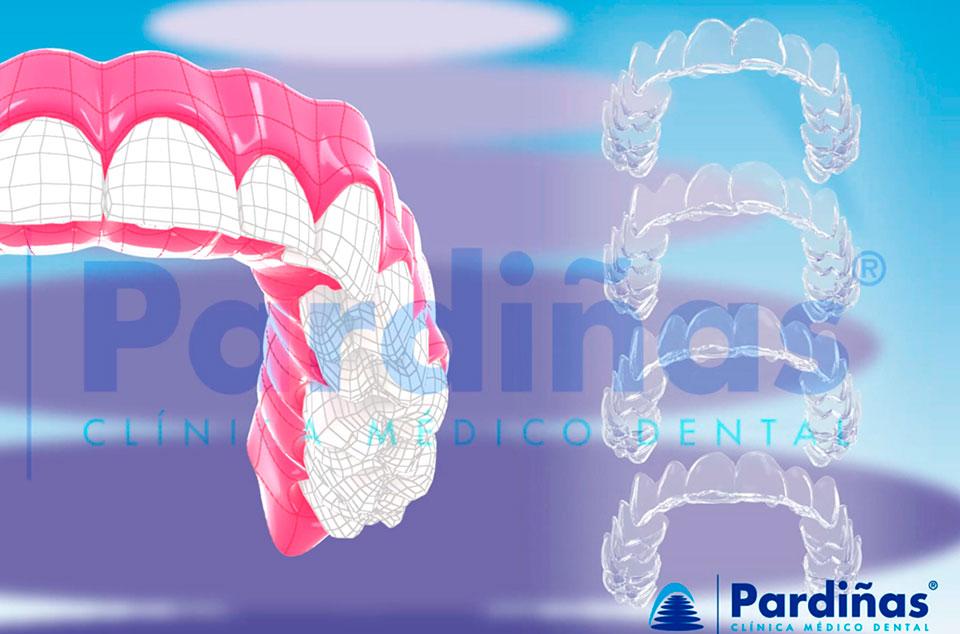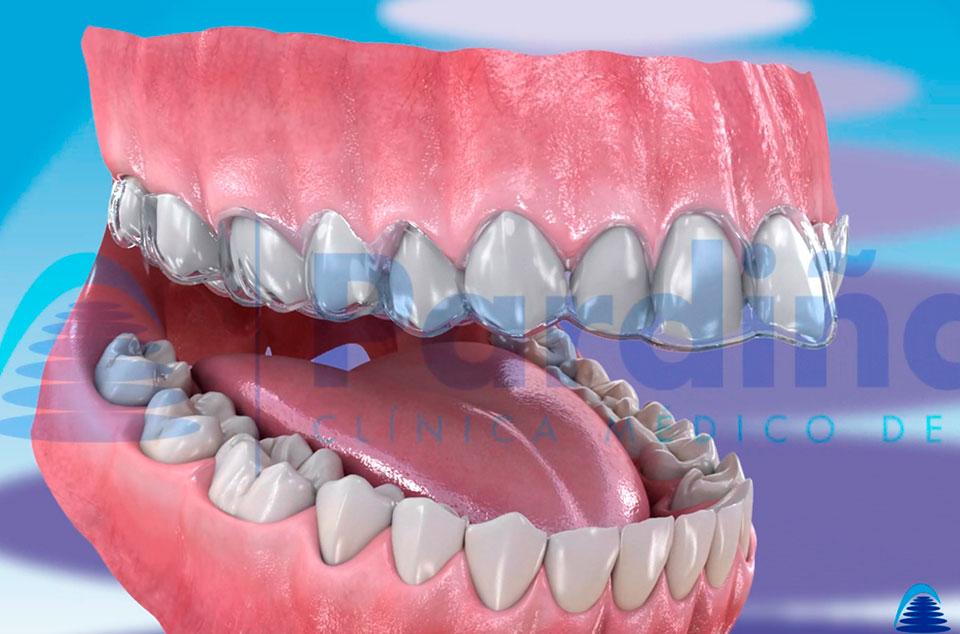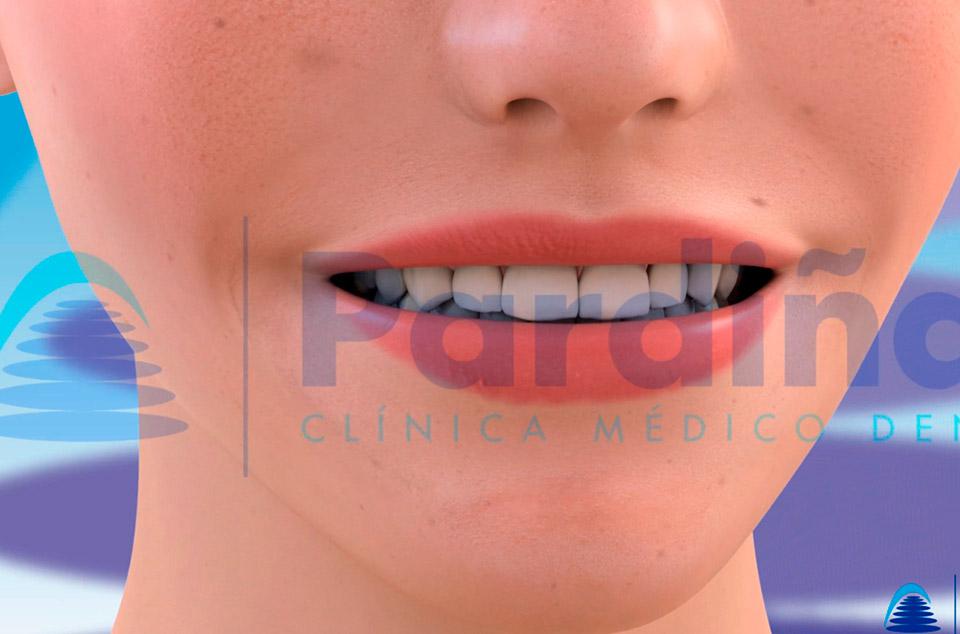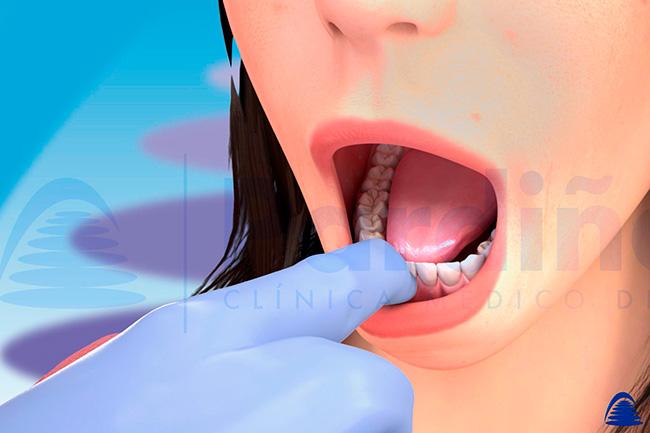Invisible Orthodontics
Invisible orthodontics allows to solve problems of teeth position and clear aligners.
The objectives of orthodontics are seeking an occlusal harmony between both jaws so you can develop a good masticatory function and aesthetic appeal.
Remember that we must try to take the place of the patient and know what he/she imagines about that treatment. We must be able to explain how far we can go with it to avoid creating false expectations, for this, diagnosis with previous studies is essential.
The techniques in orthodontics are many and are individualized for each case to indicate the most appropriate one.
What is invisible orthodontics?
Invisible orthodontics consists of wearing in the mouth a series of transparent removable appliances, called aligners, which progressively bring the teeth to their position closest to the ideal. So to speak, clear aligners cause a series of successive changes in dental positions in an orderly and gradual way as they are changed, usually on a weekly basis.
What are clear aligners for?
Any orthodontic treatment should have two goals:
- Find an occlusal harmony between both jaws so that a good chewing function can be developed.
- Provide better aesthetics in the patient's mouth.
In general, the patient is usually more interested in the aesthetic part, ignoring the importance of other factors such as having correct canine guides, presenting a posterior crossbite, anterior open bite or having a "class III" intermaxillary relationship.
The qualified professional, of course, will keep the aesthetic result in mind, but will prioritize the appropriate function over the aesthetics demanded by the patient, duly informing about the objectives of the treatment before it begins.
The expectations about the treatment and knowing to what extent they can be met are essential for the development of the planning to be fluid and to minimize setbacks.

For which cases is invisible orthodontics used?
Although their effectiveness has increased exponentially in recent years, a competent professional will advise you if your case will benefit from the use of aligners or if, on the contrary, their use is not indicated to address your situation. Nowadays, with the help of other complementary techniques, clear aligners can be used in most patients in whom treatment with braces is indicated.
Can aligners be used on children?
Indeed, it is possible to use aligners in children if the orthodontist considers that it may be an appropriate treatment.

How long does invisible orthodontic treatment last?
The treatment time varies enormously depending on the severity of each case. We could establish an approximate average time of between 9 and 12 months of treatment, although, as we say, it will depend on each patient.

Is wearing clear aligners painful?
Wearing clear aligners is not painful. However, in the first weeks it is likely that you will notice some discomfort and a feeling of pressure due to the increase in volume of the teeth covered with the aligners. These discomforts are usually caused by the temporary modifications of the contacts between the upper and lower teeth. Likewise, there may be intermediate positions in which premature contacts originate on some teeth causing discomfort during chewing.

What advantages does this type of orthodontics have compared to conventional ones?
Although the use of Invisalign, Spark or other types of transparent aligners is not recommended or feasible in all types of patients, they usually offer certain advantages over traditional braces.
Aesthetic advantages of invisible orthodontics
Without a doubt, the most obvious advantage of using clear aligners is aesthetics. With this orthodontic system, we change the brackets, arches and ligatures that keep the latter inserted in the grooves of the former, for transparent splints. In some teeth, small white fillings called “attachments” may also be present, which help control certain slightly more complex movements.

Clear aligners are less hassle
Another advantage of this treatment is that all rigid abutments with protruding angles are replaced by smooth splints with blunt ends, which minimizes the discomfort caused by rubbing the appliance.
Bracket-free orthodontics is less complicated
Another common situation in traditional orthodontic treatments is the accidental detaching of the bracket and the appearance of the “excess of the arch”. This manifests itself at both ends of the jaws as the crowding resolves and can dig into the internal mucosa of the cheeks. The use of orthodontics without braces also solves these types of problems
It's easier to maintain oral hygiene with aligners
Last but not least, as they are removable splints, they can and should be removed for chewing food and cleaning teeth and the aligners themselves, thus greatly facilitating hygiene during orthodontic treatment..

How many hours a day should invisible orthodontics be worn?
The longer the aligners are kept in the mouth, the more effective they are. As it is necessary to remove them to eat, it is established that they should be used for about 22 hours a day to increase their action on tooth movement.
Can I eat normally with the clear aligners?
No. It is recommended to remove the aligners to chew food and drink certain liquids that can cause them to stain.
How do I clean and care for the aligners?
The invisible orthodontic device should be cleaned with a soft toothbrush, different from the one used for your teeth, with water and neutral soap. This appliance must not be immersed in mouthwash. Once clean, it must be kept dry in the box that you will have for it, avoiding leaving them in pockets, backpacks, napkins ... and always out of the reach of children and pets.

Is this orthodontic device noticeable when talking?
During the first days of use of Invisalign, Spark or the clear aligner used, the tongue perceives an increase in volumen to which it must get used. Furthermore, since in these first days the device is identified as an external element, a greater volume of saliva is produced, which causes certain gestures that discreetly alter diction.
To facilitate this adaptation, during the first week we recommend reading aloud, for example, a couple of news items in the newspaper. This will make it easier for the tongue to get used to certain positions in which its contact with the aligners causes transitory changes in vocalization.

How often should I go to check-ups?
Although the periodicity of the reviews is adjusted to the characteristics of each case and the personal situation of each patient, they are usually spaced between one and two months.

Invisible orthodontic treatment in A Coruña
If you live in A Coruña and are interested in a possible treatment with clear aligners, book an appointment without obligation with our orthodontic specialists. We will assess your case and offer you the best solution.